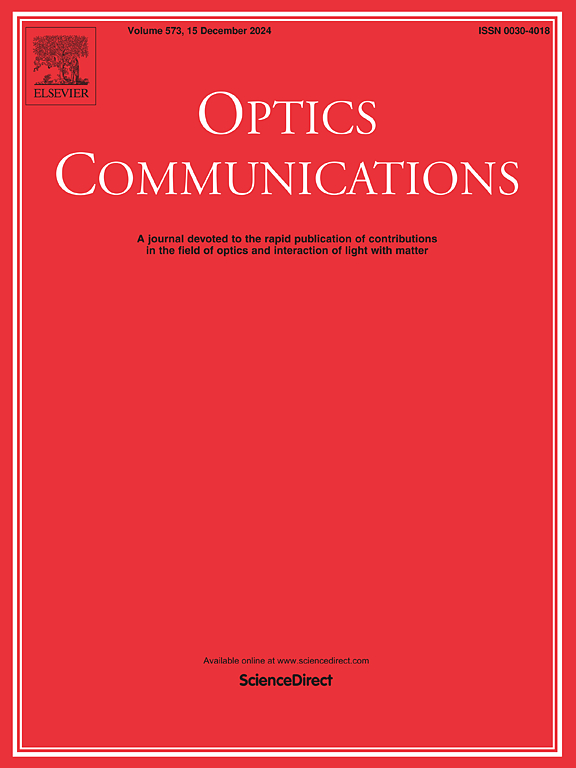Amplification in 1D photonic multilayer structure with spatially chirped PT-symmetric defect in Terahertz domain
IF 2.2
3区 物理与天体物理
Q2 OPTICS
引用次数: 0
Abstract
In this paper, we study nonreciprocal enhanced amplification of optical characteristics of a one-dimensional (1D) photonic multilayer structure with a parity-time (PT) symmetric defect layer in the Terahertz regime. Non-Hermitian scattering properties of the 1D photonic structure with different spatially chirped defect layers are explained using the transfer matrix method (TMM) and scattering matrix. The proposed 1D photonic structure exhibits enhanced non-reciprocal reflection with constant loss and gain in the defect layer. In contrast, periodic modulations in loss and gain lead to unidirectional amplification of discrete defect mode. The considered 1D structure is also investigated with the variation in incident angle, which shows the shift of certain defect modes towards higher frequencies and the conversion of perfect absorption points to lasing points for forward and backward incidences. In addition, different chirped profiles of loss and gain modulate the defect modes significantly and induce amplification at a particular incident angle and loss/gain value. The observed amplifications of defect modes can enact unidirectional as well as bidirectional lasing action with proper choice of the chirp profile of gain and loss in the defect layer.
求助全文
约1分钟内获得全文
求助全文
来源期刊

Optics Communications
物理-光学
CiteScore
5.10
自引率
8.30%
发文量
681
审稿时长
38 days
期刊介绍:
Optics Communications invites original and timely contributions containing new results in various fields of optics and photonics. The journal considers theoretical and experimental research in areas ranging from the fundamental properties of light to technological applications. Topics covered include classical and quantum optics, optical physics and light-matter interactions, lasers, imaging, guided-wave optics and optical information processing. Manuscripts should offer clear evidence of novelty and significance. Papers concentrating on mathematical and computational issues, with limited connection to optics, are not suitable for publication in the Journal. Similarly, small technical advances, or papers concerned only with engineering applications or issues of materials science fall outside the journal scope.
 求助内容:
求助内容: 应助结果提醒方式:
应助结果提醒方式:


